Learn how to do a push-up to build upper-body muscle and a stronger core
We asked two trainers how to do a push-up to help you master this classic bodyweight exercise
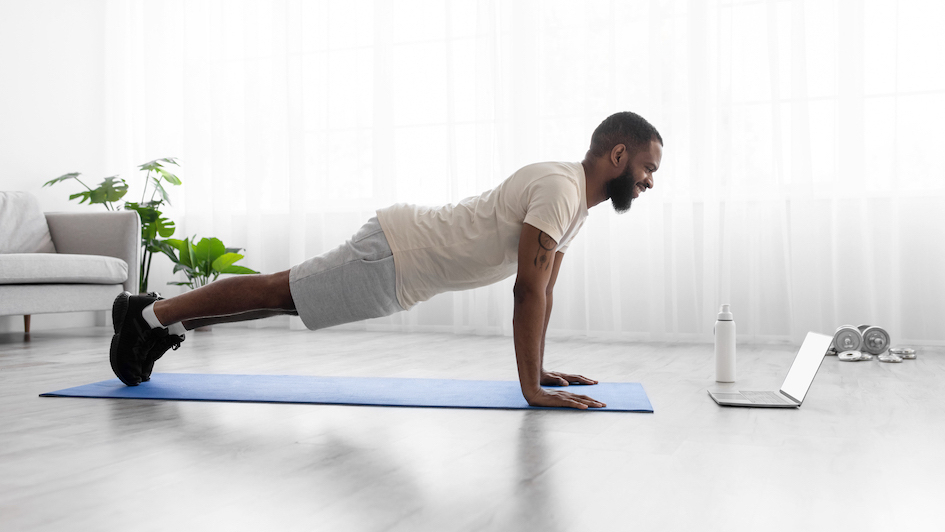
Learning how to do a push-up properly is a great way to perfect your form and get the most from this muscle-building move. Whether you're a newcomer or a seasoned gym-goer, it's essential to do a push-up with the correct technique to avoid injury.
A well-executed push-up works several different muscles in your upper body, and it engages your core muscle, so you can build strength around your mid-section without picking up a set of weights like adjustable dumbbells.
We've spoken to two personal trainers to help you learn how to do a push-up, the benefits of this workout staple, and several push-up variations to adjust the intensity of the push-up.

Abbie Watkins is a certified personal trainer and sports nutritionist at OriGym. She promotes high-intensity training mixed with more casual exercise, incorporating spin classes and scenic runs in her training.
How to do a push-up
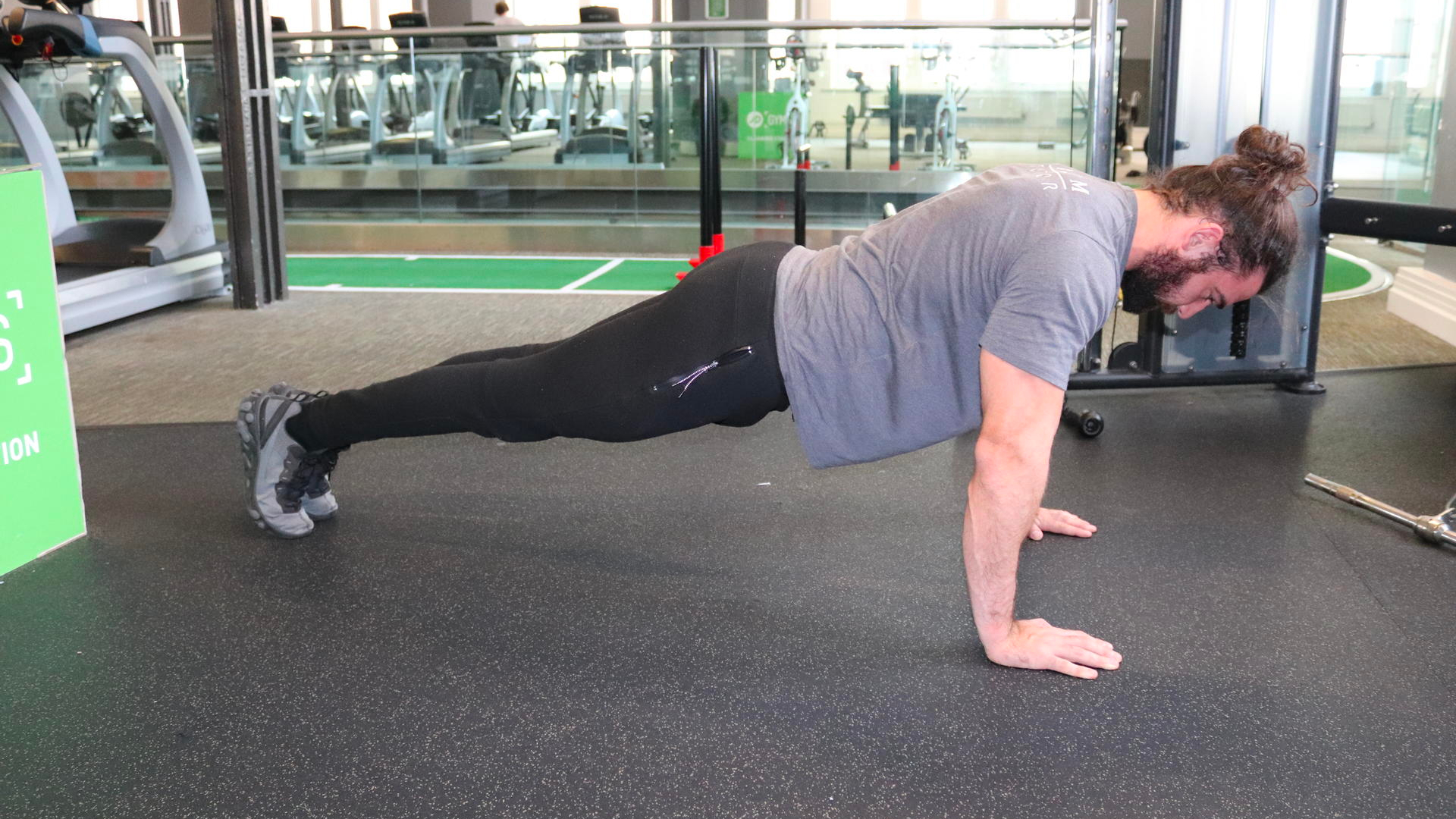
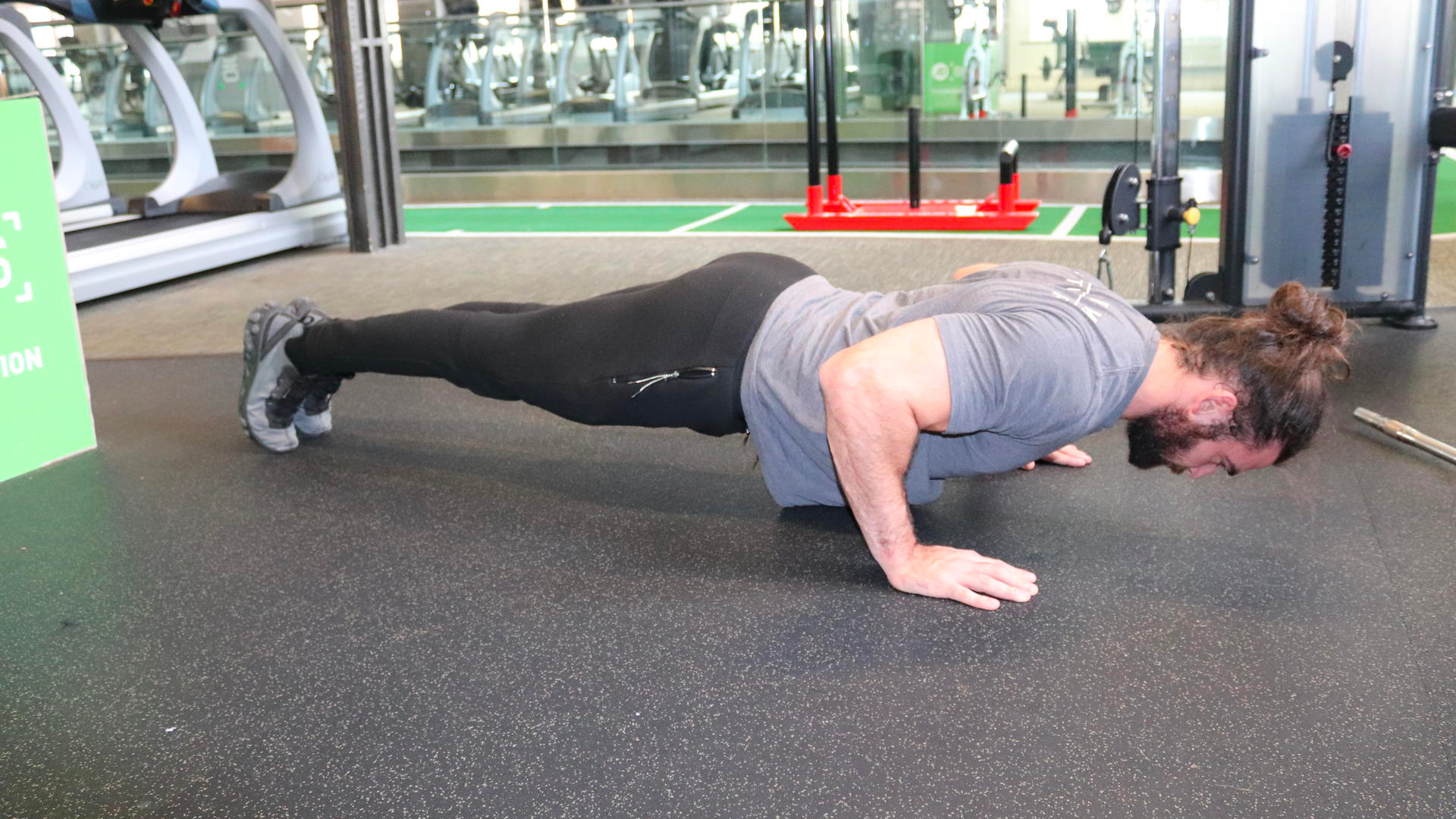
If you've never done a push-up before or want to check that you're carrying out the exercise with the correct form, we spoke to Abbie Watkins, a qualified personal trainer at OriGym, who explained how to do a push-up.
- Start in a plank position on the floor with your hands slightly wider than shoulder-width apart, arms straight, and legs straight. The balls of your feet and toes should be firmly on the floor.
- Engage your core and tense the muscles around your stomach to maintain a straight line from your shoulders, along your back, down to your feet.
- Take a deep breath in as you bend your elbows to lower towards the floor.
- Stop once your elbows reach 90 degrees, and hold this position for a moment.
- Breathe out as you straighten your arms back to the starting position. That's one repetition.
How to do a push-up for beginners
Completing your first push-up may seem like a daunting challenge, but there are variations you can do on a traditional push-up that make it more beginner-friendly.
"When doing push-ups as a beginner, it's important to ensure your feet are positioned correctly. This will help reduce the chances of injury by keeping you balanced," advised Watkins.
"It's also important to ensure you don't lose form, which normally occurs when people push their glutes back too high or letting their hips fall forward."
Get the Fit&Well Newsletter
Start your week with achievable workout ideas, health tips and wellbeing advice in your inbox.
"If your body is not in a straight line between your shoulders and heels, then you're not performing the exercise correctly. To avoid this, always make sure your core muscles and glutes are engaged."
If you're not ready to take on a horizontal push-up, you might want to try doing wall push-ups every day to reduce the resistance but still work the relevant muscles and build towards more advanced push-ups.
Alternatively, the knee push-up is a great push-up for beginners. By placing your knees on the ground, you don't have to support the majority of your bodyweight through your upper body during the exercise.
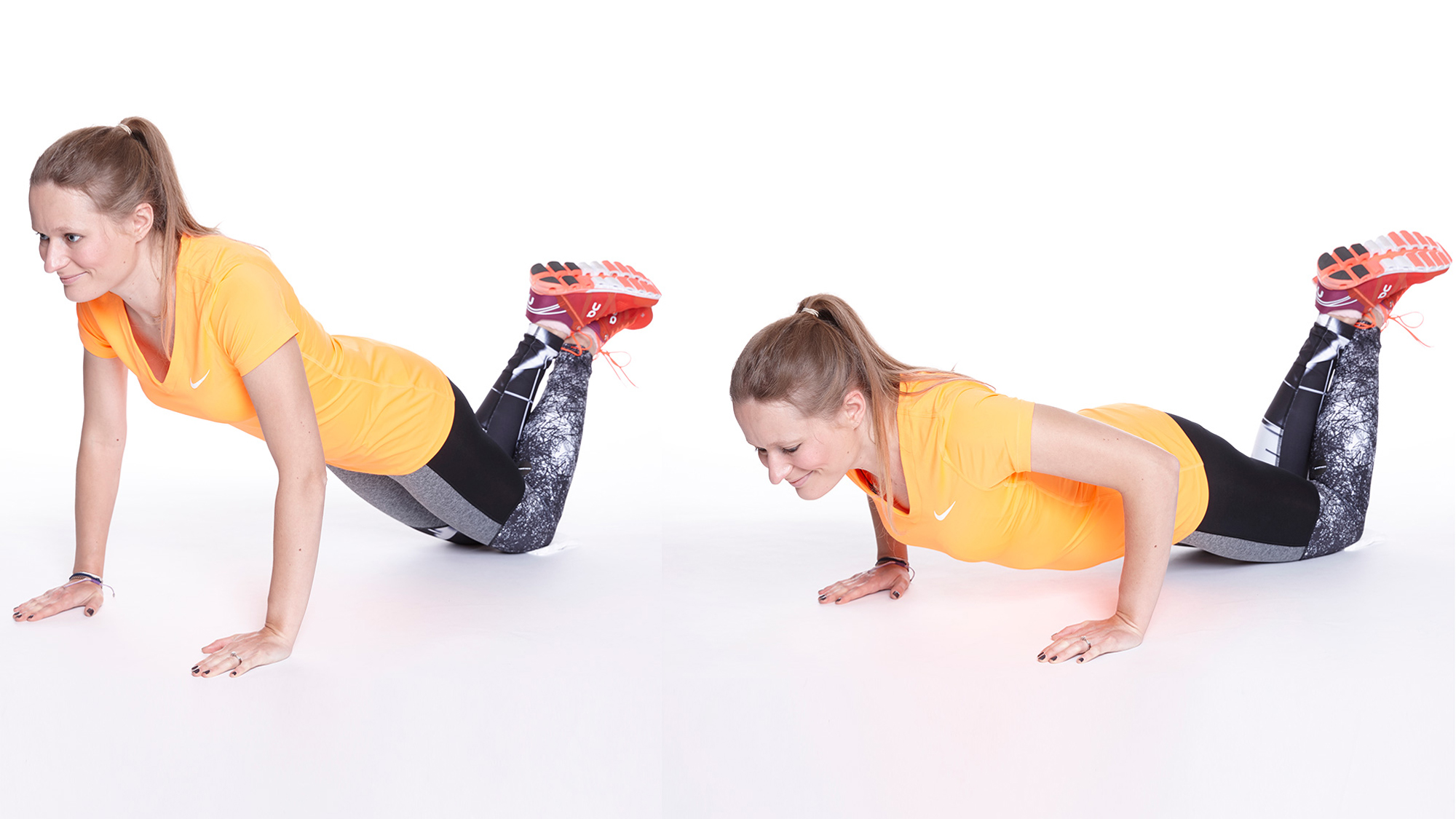
- Start on all fours and lean forward so your hands are under your shoulders and your weight is over your top half.
- With your elbows facing outwards, lower your body to the floor, keeping a straight back.
- Lift your torso, pushing through your arms, to return to the starting position.
Push-up variations
Whether you want to challenge your muscles or vary your workouts, we’ve gathered lots of muscle-building, metabolism-boosting push-up variations to help you on your fitness journey.
1. Spider-Man push-up
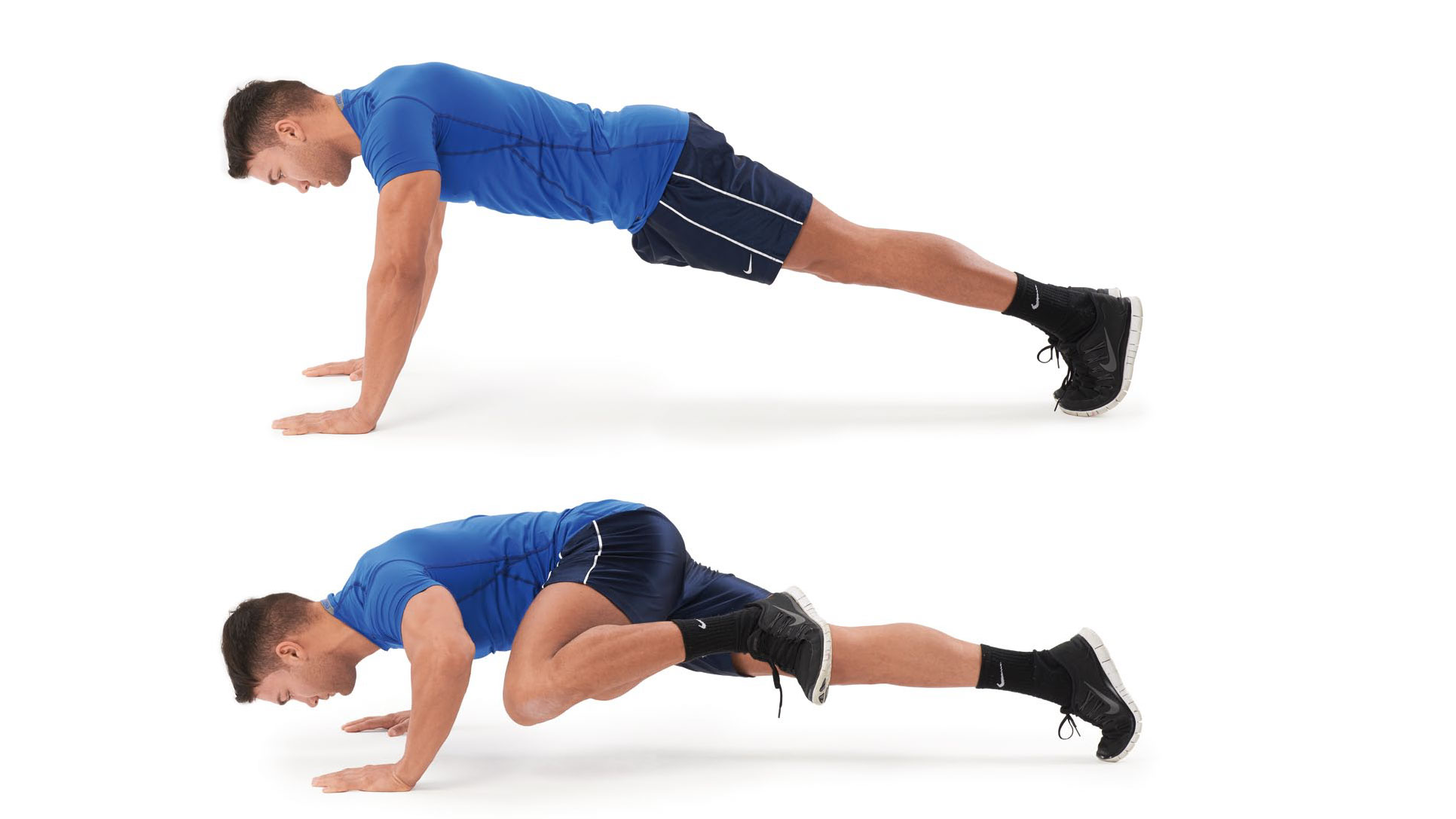
The Spider-Man push-up acquired its superhero-themed name as it mimics the leg movements of Stan Lee’s great comic book creation. It’s an altogether trickier — not to mention tougher — workout.
- Begin in the standard push-up position, with your arms straight and hands placed just wider than shoulder width apart. As usual, your body should form a straight line from your heels to your shoulders.
- As you lower yourself, bring your right knee out sideways and pull it up towards your right elbow.
- Once you’ve reached the lowest position, slowly push back up to the plank position. While you’re doing this, reverse the leg movement so it finishes in the starting position.
- Once you’ve done it with your left leg, swap over and do the same exercise with your right leg. Alternate between the two during sets of repetitions.
2. Judo push-up
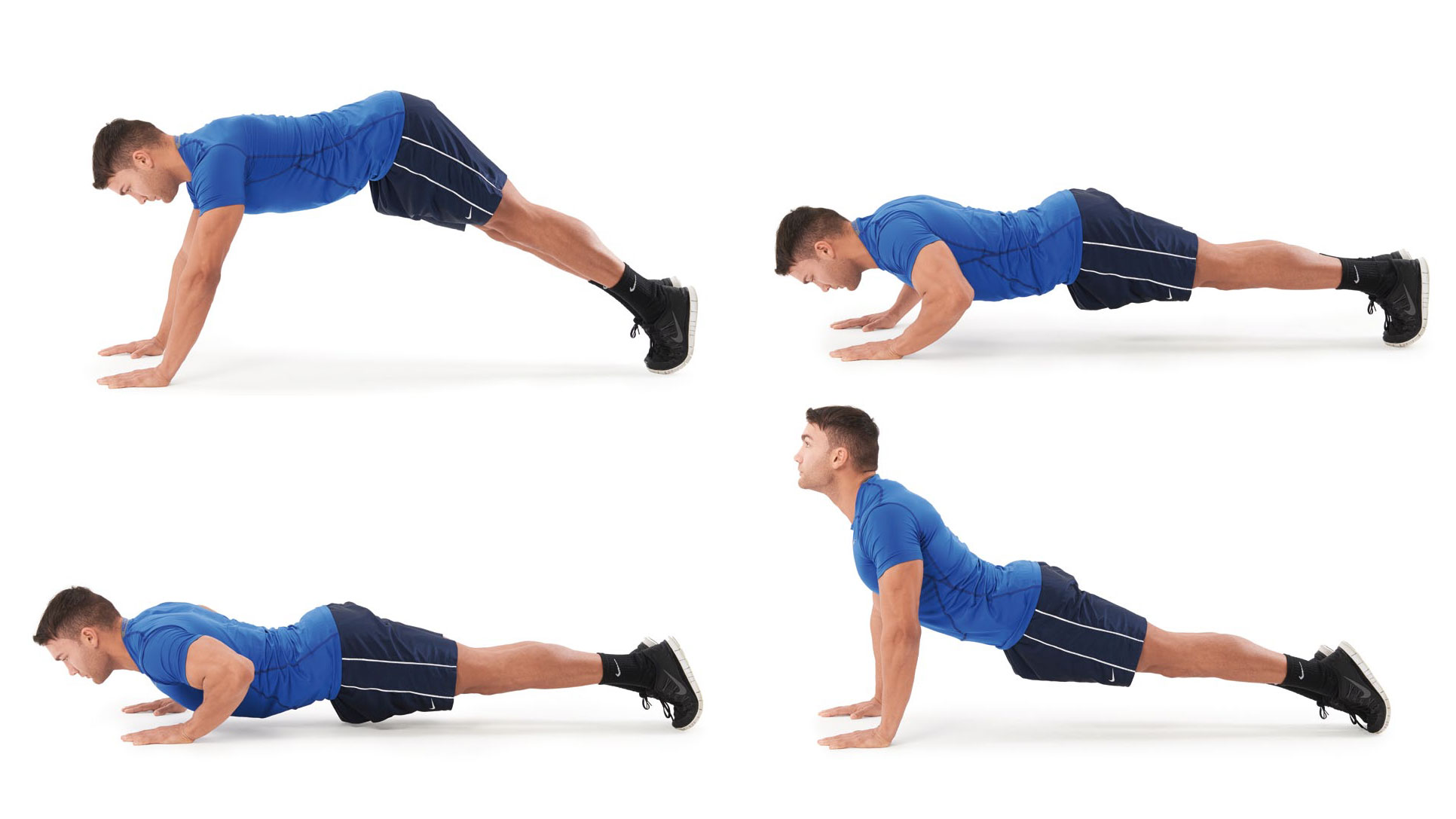
This variation on the push-up adds in extra movements for the abs and upper body, so it should help develop your core, and is similar to the exercises you'd do during a core yoga practice.
- Start in an adapted push-up position, with your body bent at the hips to make a rough “v” shape. As usual, your hands should be placed just wider than hip-width apart, with your legs together and the balls of your feet grounded.
- Lower yourself down in the adapted position, then bring your hips down to make a standard push up “down” position.
- Pause briefly in the lower position. Don’t allow your chest or hips to touch the floor — pull in your abs and glutes to help maintain good posture.
- As you push back up again, raise your head and shoulders to gently stretch your core and lower back.
- Pause briefly in this position, before lowering your head and shoulders to return to the starting position.
3. Diamond push-up
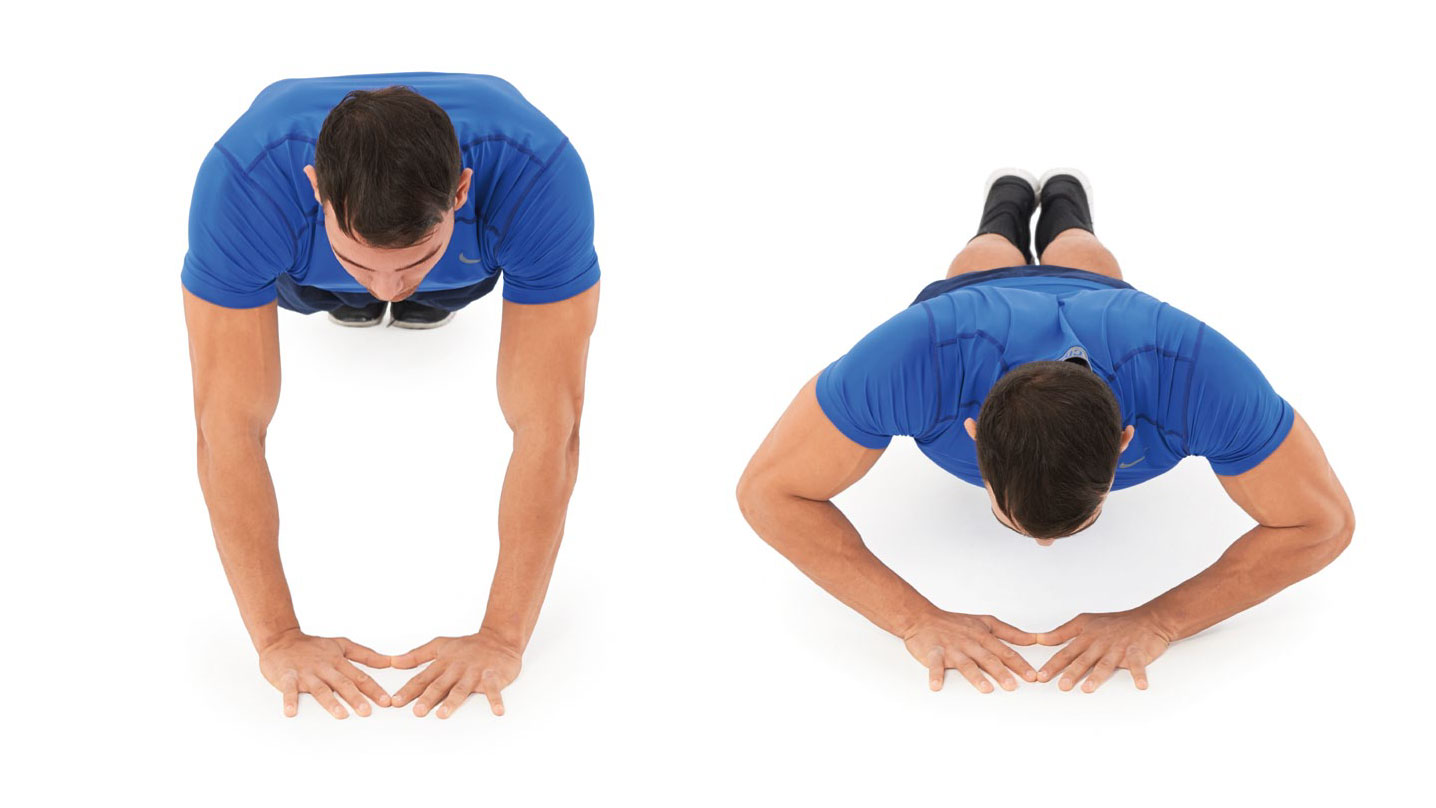
The diamond push-up uses a closer grip, which makes the move more challenging. It also works the triceps harder, too.
- Assume the plank position, taking care to make a straight line with your back and legs.
- Place your hands a few inches apart, with your fingers pointing forwards at a 45-degree angle and your thumbs extended.
- The tips of your thumbs and fingers should be touching and form a triangle shape.
- Lower yourself until your chest is just a few inches off the ground, just as you would a normal push-up.
- Pause briefly at the lowest point, before slowly pushing back up to the starting position.
4. Scorpion push-up
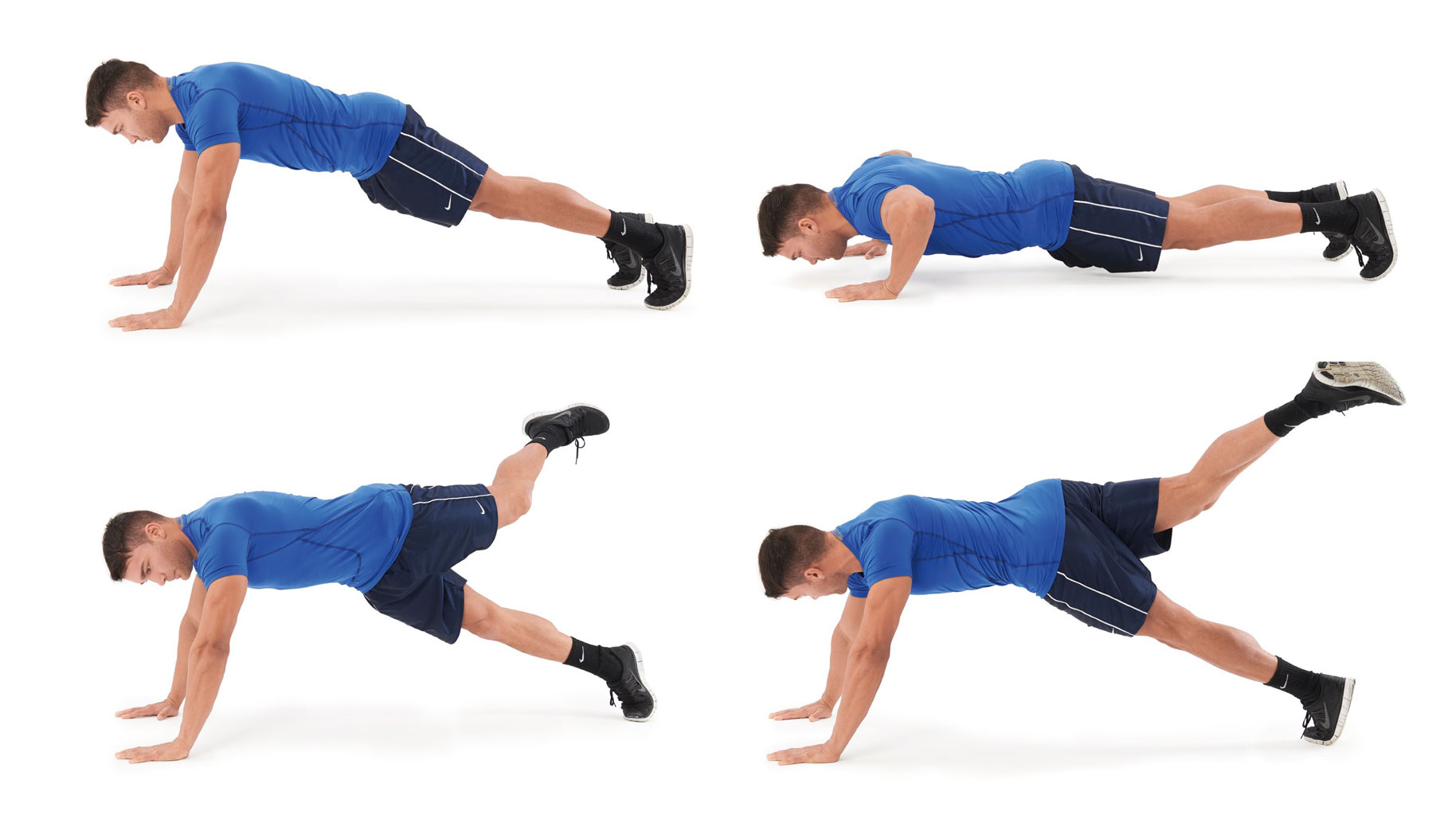
The scorpion push-up offers a test of your flexibility, and only those with particularly flexible muscles can perform it accurately. Because of this, we’ve adapted the exercise to make it easier for those of all levels of ability and muscular flexibility.
- Get into the plank position, but this time place your feet roughly hip-width apart. Your arms should be straight, with your hands positioned in the standard pose.
- Remember to pull in your glutes and core to help make your body more rigid. This helps maintain the straight line between your shoulders and ankles.
- Lower yourself towards the ground, as if you were doing a regular push-up, until your chest is a few inches off the ground.
- As you push back up, flick your left leg over your right ankle and out to the side. To do this, you’ll need to twist at the core a little.
- How far you are able to flick it out depends on your flexibility; to begin with, don’t try and overreach and concentrate on keeping good balance and control.
- Once your arms are fully extended, go straight into another push-up, lowering your body whilst simultaneously bringing your core and legs back to the usual position.
- When you press back up again, reverse the “scorpion” leg movements so that you’re bringing your right leg over your left ankle and your right heel towards your left shoulder.
5. Walking gecko push-up
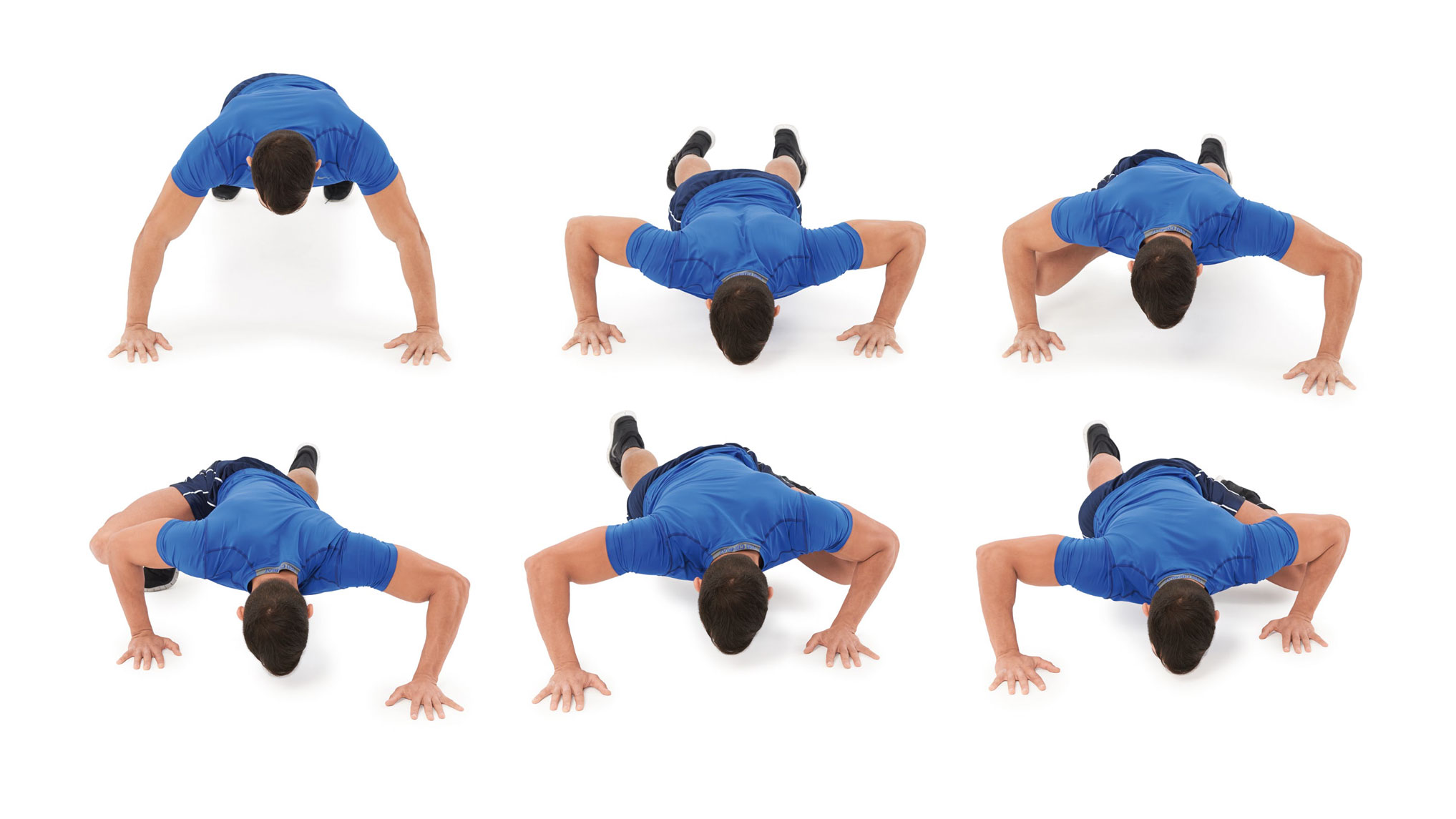
This variation on the push-up requires good agility, and provides a workout for the core, legs, and upper body. If you’re having trouble getting the movements right, imagine that you’re walking like a gecko.
- Start in a regular plank position, but with your feet hip-width apart and your hands just wider than shoulder width apart.
- Lower yourself in the standard manner.
- As you come up, simultaneously bring your right knee towards your right elbow, and move your left hand forward.
- As you move forward, your body should naturally lower. In the lowest position, your left hand should be further forward than your head.
- As you come up, raise your left knee towards your left elbow, and push your right hand forwards.
- Complete the movement, so that you’re down low with your left knee touching your left elbow and your right arm extended forwards. That’s one repetition.
6. Push-up into rotation
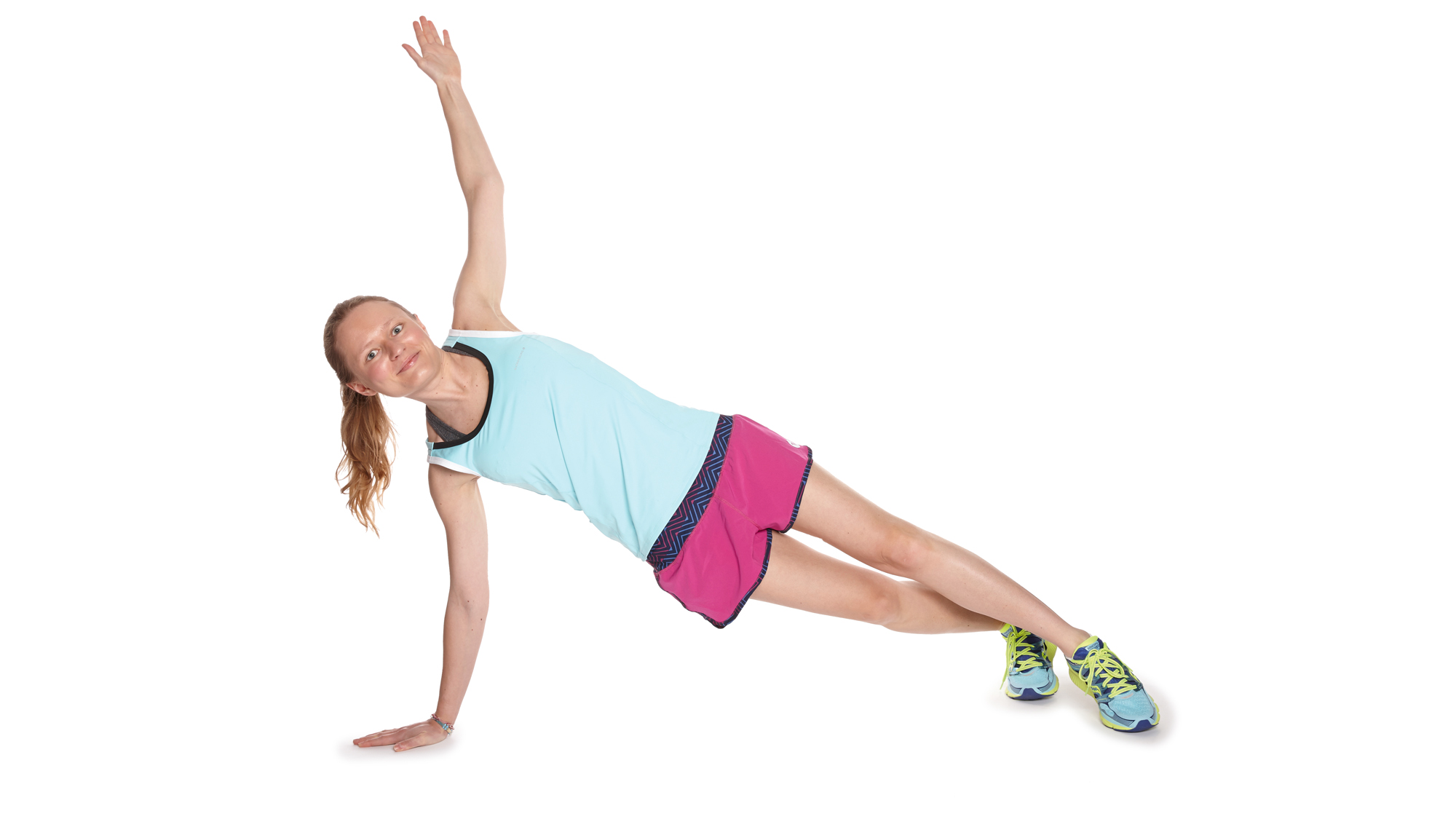
If you're after a way to build muscle in your upper body and develop core strength, then consider adding a push-up into rotation to your routine. This move combines a push-up with a side plank but also requires your core for stabilization as you transition between the two positions.
- Start in a push-up position, either on your toes or on your knees, and lower your body towards the floor.
- As you rise back to the start position, raise one hand off the floor and rotate up, so your raised hand is pointing towards the ceiling.
- Return to the start position and repeat on the other side.
7. Dive-bomb push-up
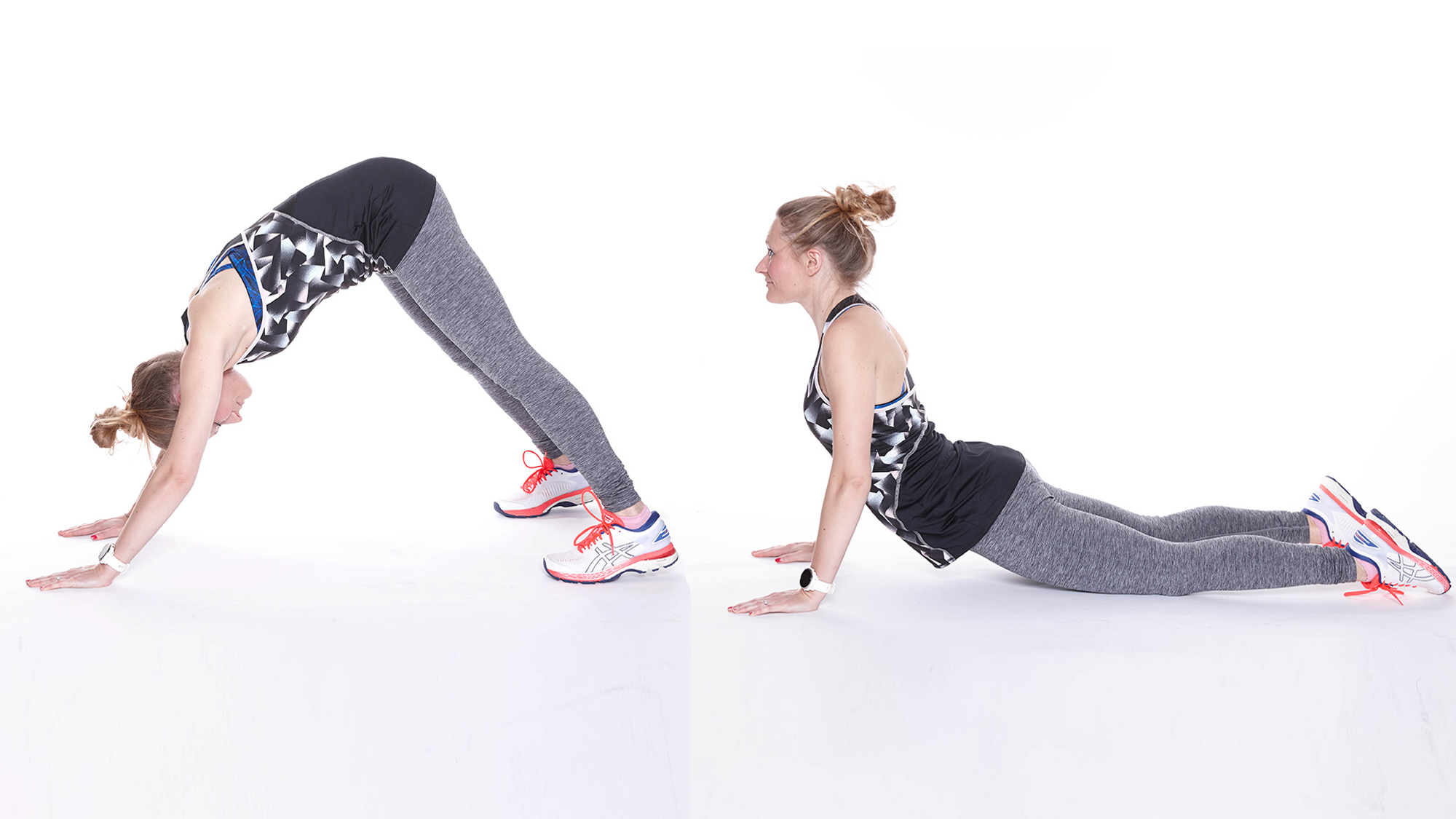
This push-up variation blends the bodyweight move with yoga-style stretching. The movement starts in the yoga position downward-facing dog before transitioning into a chest and leg-focused strength exercise.
- Perform a downward-facing dog, raising your bottom in the air, so you look like an inverted 'v'.
- Lower shoulders towards the floor, but before your chin hits the ground, swoop your body forward, so you push your chest out and forwards.
- Your back should be arched and arms locked out.
- Hold the position for a moment, then return to the starting position by reversing the exercise.
8. Close-hand push-up
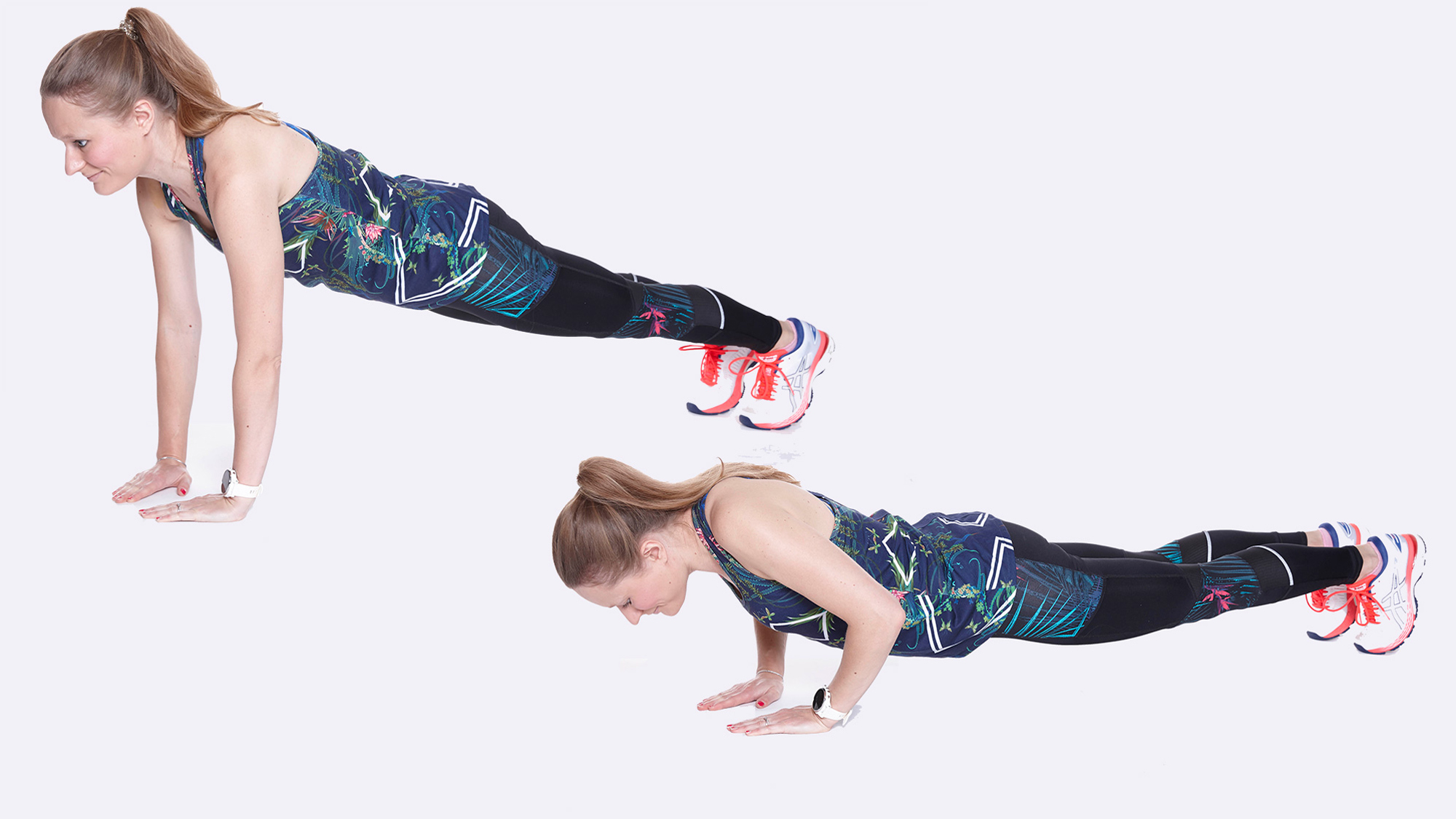
This move looks similar to a diamond push-up, but the placement of your hands is mid-way between shoulder-width and the diamond position. As a result, it works different muscles and is complementary to a standard or diamond push-up.
- Take up a plank position with your hands placed on the floor, narrower than shoulder-width apart.
- Slowly lower yourself down to perform a push-up until your chest almost touches the floor.
- Pause, then push yourself up to the starting position.
9. Swiss Ball push-up
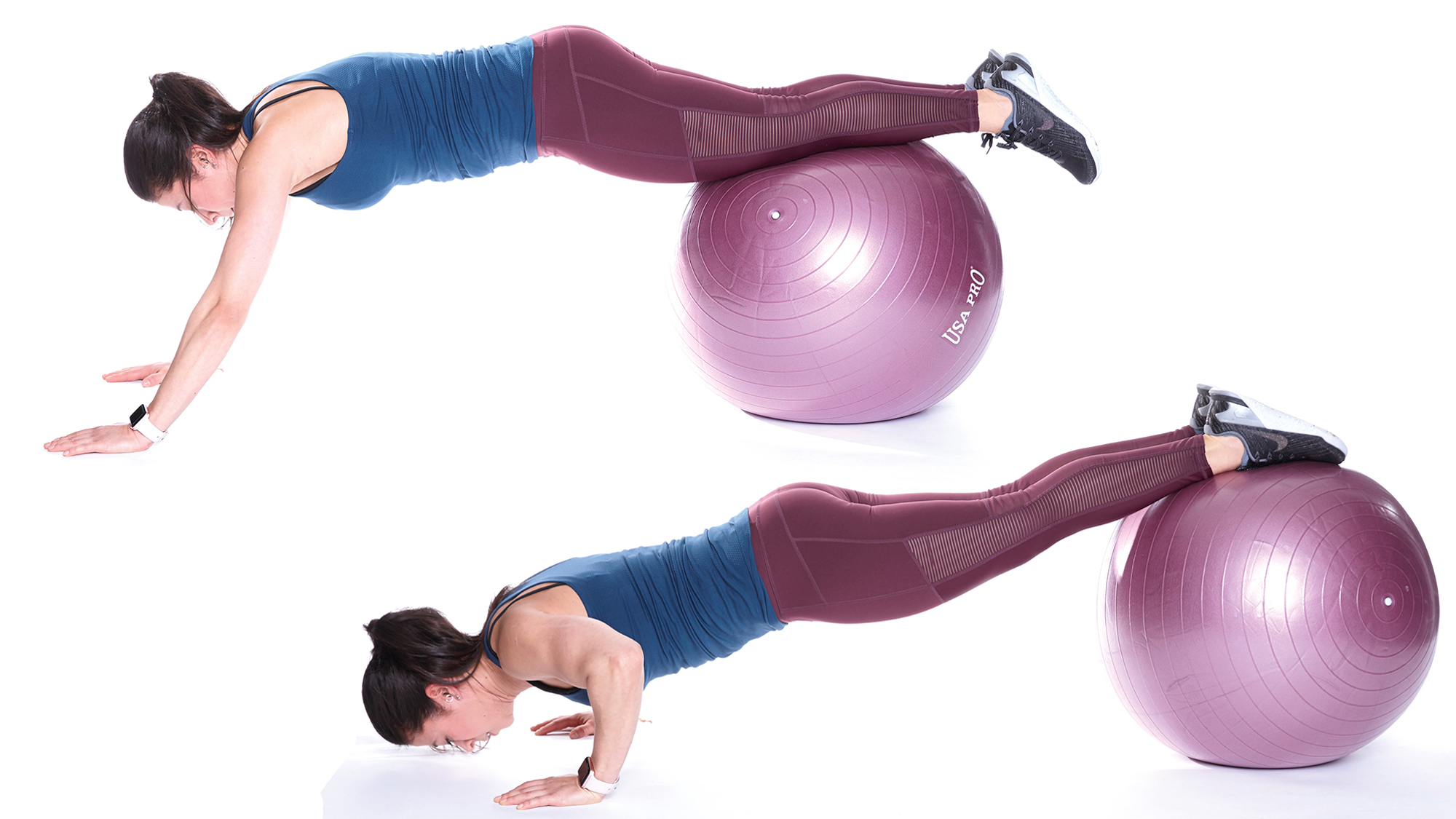
If you want to challenge yourself and get a whole-body workout, then give this Swiss Ball push-up a try. The exercise targets your chest, triceps, and core as the ball's instability means your whole body will work to maintain balance.
- Perform a press up with your feet on the ball, ensuring that you maintain a neutral plank position throughout.
- Once you have completed your press up, push your body back while keeping your core engaged and return to the start position.
10. Knee push-up

If you're looking for how to do a push-up for beginners, then a knee push-up is a great place to start. By placing your knees on the ground, you don't have to support the majority of your bodyweight through your upper body during the exercise.
- Start on all fours and lean forward so your hands are under your shoulders and your weight is over your top half.
- With your elbows facing outwards, lower your body to the floor, keeping a straight back.
- Lift your torso, pushing through your arms, to return to the starting position.
Which muscles are used during a push-up?
If you're wondering what muscles do push-ups work, as you lower into a push-up, you'll feel the muscles in your arms working hard, but that's not the only area you can strengthen with a push-up.
"When completing push-ups, you'll notice that your pectoral muscles worked. You'll also have secondary muscles such as the deltoids and triceps activated during this exercise," said Watkins.
Strength and conditioning coach and Bio-Synergy ambassador, Mike McGurn, agrees. "Push-ups are a great exercise because they work the pecs, deltoids, and triceps while strengthening the muscles of the core"
"In fact, one of the more recent studies published in the Journal of Applied Biomechanics found doing push-ups activates 51% more of the abdominal muscles than doing a bench press," he explained.
"On top of improved upper body definition push-ups build muscular endurance and create lean muscle mass that improves overall fitness and good health." And this functional strength is essential for everyday tasks like reaching high shelves or carrying groceries.
"The most effective push-ups are push-ups on your toes, as they engage a greater amount of activation in the muscles of the upper body and core – demanding whole-body integration," McGurn notes.

Mike McGurn is an international strength and conditioning coach, and Lead Strength and Conditioning Coach at Queen's University Belfast. He has trained three national senior Irish Rugby teams and competed for Ulster and Ireland in cross-country and athletics events.
What are the benefits of push-ups?
"Push-ups carry many benefits, including strengthening your upper body, which can help reduce the chance of injury in this area," said Watkins. And because it works several areas of your body, it burns energy and can help you maintain a calorie deficit.
Just like the plank, a push-up also works your core, a section of muscle around your stomach that includes your abdominals. Your core connects your upper and lower body, so strengthening this muscle with a push-up can improve your posture, boost your balance, and promote blood flow.
There are plenty of direct muscle-building benefits to a push-up, but it's also a great way to protect your health in the long term. According to a study in the JAMA Network Open, push-ups may help you avoid heart issues in the future.
The researchers studied 1,104 active men and found that participants that could do more than 40 push-ups were 96% less likely to develop cardiovascular problems than the men who could manage less than 10 push-ups.

Lou Mudge is a Health Writer at Future Plc, working across Fit&Well and Coach. She previously worked for Live Science, and regularly writes for Space.com and Pet's Radar. Based in Bath, UK, she has a passion for food, nutrition and health and is eager to demystify diet culture in order to make health and fitness accessible to everybody.
Multiple diagnoses in her early twenties sparked an interest in the gut-brain axis and the impact that diet and exercise can have on both physical and mental health. She was put on the FODMAP elimination diet during this time and learned to adapt recipes to fit these parameters, while retaining core flavors and textures, and now enjoys cooking for gut health.
- Sam HopesStaff Writer